ETH News
All stories by Barbara Vonarburg
The magnificence of objectivity and a couple of solid proofs
News

Raphael Steiner received his doctorate in mathematics at the age of 21. Now the Swiss National Science Foundation is funding his research at ETH Zurich in the field of graph theory. Among other things, this involves proving a conjecture that is over 80 years old.
Mystery of the Martian core solved
News
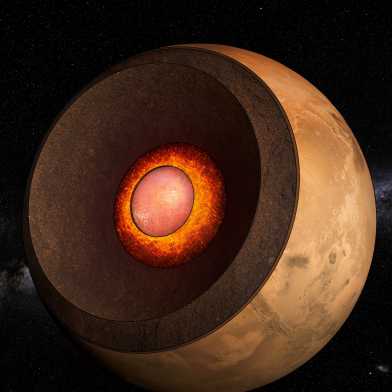
Mars’s liquid iron core is smaller and denser than previously thought. Not only is it smaller, but it is also surrounded by a layer of molten rock. This is what ETH Zurich researchers conclude on the basis of seismic data from the InSight lander.
The strength of nature's weakest force
- Globe magazine
- Homehero

Gravity keeps our feet firmly on the ground and Earth in its orbit around the Sun. Meanwhile, satellites in space measure the acceleration caused by the Earth’s gravitational pull.
A change of perspective caused a sensation
News
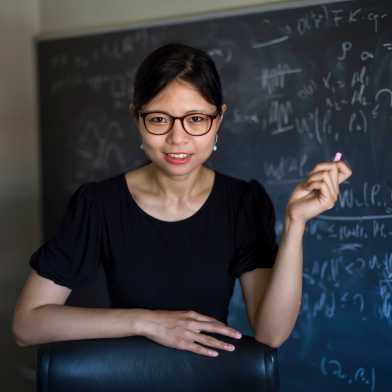
Using applied mathematics, Yunan Yang finds solutions to the inverse problems that arise in seismology, weather forecasts, and machine learning. The key to her success is something called optimal transport.
Martian crust like heavy armour
News
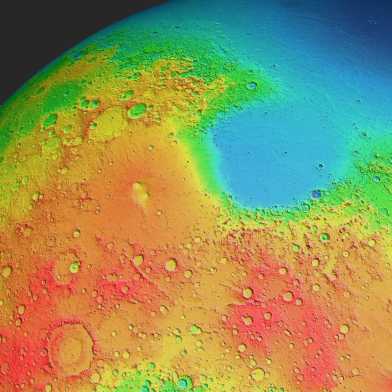
A strong quake in the last year of the NASA Mars InSight mission, enabled researchers at ETH Zurich to determine the global thickness and density of the planet's crust. On average, the Martian crust is much thicker than the Earth’s or the Moon’s crust, and the planet’s main source of heat is radioactive.
Researching, learning and adapting
- News
- Homepage
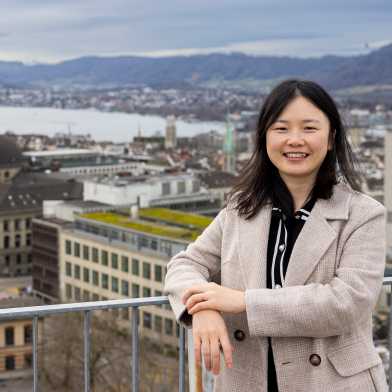
One of the greatest unknowns in climate change is the question of how particulate matter affects clouds. Yu Wang is using machine learning and satellite data to investigate the surprising role of these tiny particles in the atmosphere.
A habitable planet
Globe magazine
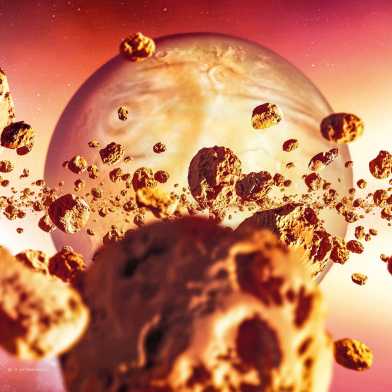
Life has existed on Earth for billions of years. Stabilising mechanisms have helped our planet remain habitable to this day.
The quest for infinite paths
News

How does water seep through porous rock? Investigating this question with a mathematical model was the starting point for Barbara Dembin’s research. The mathematician is generating new insights in what is known as percolation theory.
What seismic waves reveal about the Martian crust
News
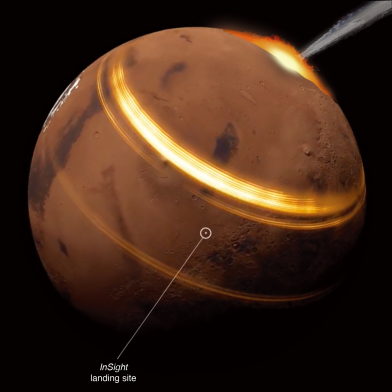
Following two large meteorite impacts on Mars, researchers have observed, for the first time, seismic waves propagating along the surface of a planet other than Earth. The data from the marsquakes was recorded by NASA’s InSight lander and analysed at ETH Zurich in collaboration with the InSight Science Team. It provides new insights into the structure of the Martian crust.
Simple questions, difficult answers
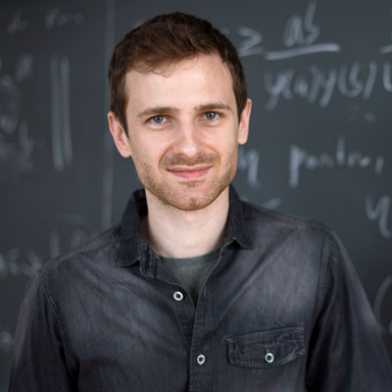
Oliver Janzer is a mathematician who specialises in graphs – that is, collections of nodes that may or may not be connected, such as Facebook users. As part of his ETH Fellowship, the young researcher has been busy solving problems that had stumped mathematicians for decades.
Solving problems with intuition
News
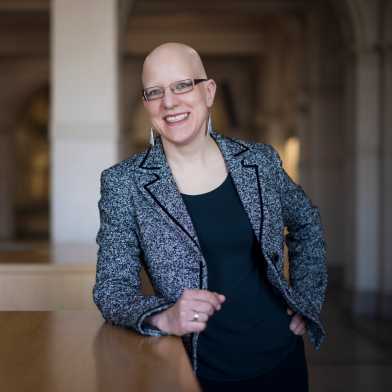
In her research as a number theorist, Sarah Zerbes focuses on one of the oldest – but also most topical – branches of mathematics. Her work is closely tied to one of the great open mathematical problems, the solution for which carries a prize of one million dollars.
At the interface of physics and mathematics
News

Sylvain Lacroix is a theoretical physicist who conducts research into fundamental concepts of physics – an exciting but intellectually challenging field of science. As an Advanced Fellow at ETH Zurich’s Institute for Theoretical Studies (ITS), he works on complex equations that can be solved exactly only thanks to their large number of symmetries.
Advancing to the core thanks to marsquakes
News
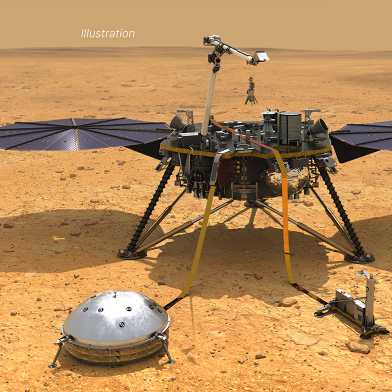
Researchers at ETH Zurich and the University of Zurich have been able to use seismic data to look inside Mars for the first time. Marsquakes recorded by NASA’s InSight lander provided information about the structure of the planet’s crust, mantle and core.
Martian moons have a common ancestor
News
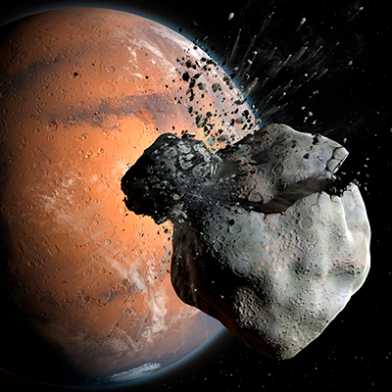
Phobos and Deimos are the remains of a larger Martian moon that was disrupted between 1 and 2.7 billion years ago, say researchers from the Institute of Geophysics at ETH Zurich and the Physics Institute at the University of Zurich. In collaboration with the U.S. Naval Observatory, they reached this conclusion using computer simulations and seismic recordings from the InSight Mars mission.
Size of helium nucleus measured more precisely than ever before
News
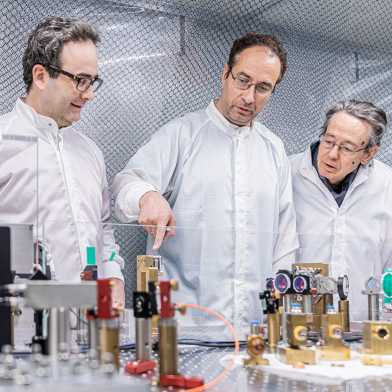
In experiments at the Paul Scherrer Institute PSI, an international research collaboration with ETH Zurich involvement has measured the radius of the atomic nucleus of helium five times more precisely than ever before. With the aid of the new value, fundamental physical theories can be tested.
How our planets were formed
News
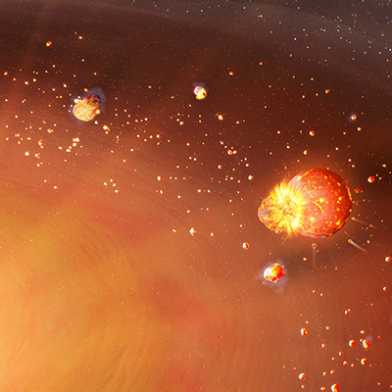
Terrestrial planets versus gas and ice giants: A new theory explaining why the inner solar system is so different to the outer regions runs counter to the prevailing wisdom. The theory was proposed by an international research group with ETH Zurich’s participation.
Surprise on Mars
News
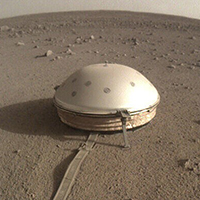
NASA’s InSight mission provides data from the surface of Mars. Its seismometer, equipped with electronics built at ETH Zurich, not only records marsquakes, but unexpectedly reacts to solar eclipses as well. When the Martian moon, Phobos moves directly in front of the sun, the instrument tips slightly to one side. This miniscule effect could aid researchers in determining the planet’s interior.
Stardust from red giants
News
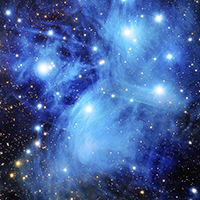
Some of the Earth's building material was stardust from red giants, researchers from ETH Zurich have established. They can also explain why the Earth contains more of this stardust than the asteroids or the planet Mars, which are farther from the sun.
Better to dry a rocky planet before use
News
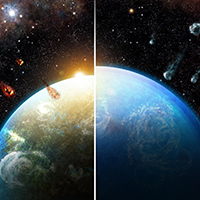
Earth’s solid surface and clement climate may be in part due to a massive star in the birth environment of the Sun. Without its radioactive elements injected into the early solar system, our home planet could be a hostile ocean world covered in global ice sheets. This is the result of computer simulations of planet formation.
Encouraging prospects for moon hunters
News
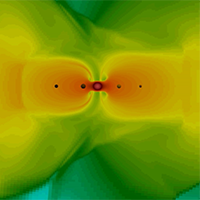
Astrophysicists of the University of Zürich and ETH Zürich show how the icy moons of Uranus were born. Their result suggests that such potentially habitable worlds are much more abundant in the Universe than previously thought.
Tom Dooley and the young, active sun
News
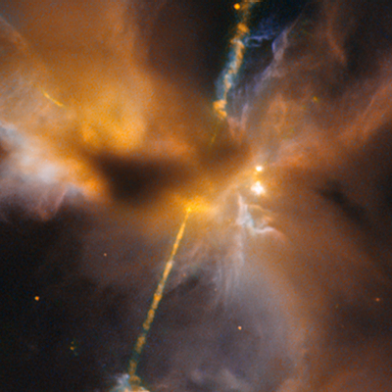
Just about 4.5 billion years ago, our sun went through an active phase during which it shone much more brightly than it does today – a conclusion researchers reached after taking measurements at ETH Zurich using a truly unique instrument.
An amazingly wide variety of disks
News
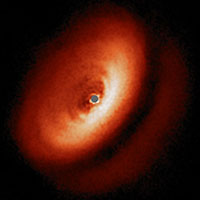
With an instrument at the Very Large Telescope in Chile scientists of ETH Zurich observed planet-forming disks around young stars similar to the sun 4,5 billion years ago. Surprisingly, the disks are very different. The data will help to shed more light on the formation processes of planets.
A lifelong fascination with planets
News

Watching Star Trek as a child first inspired Judit Szulágyi’s fascination with planets and galaxies. Today Forbes ranks the astrophysicist among Europe’s 30 most influential scientists under the age of 30. Watch as she explains how she uses computer simulations to research the birth of giant planets – and how she decided on this career path in the first place.
Sunbathing meteoroids
News
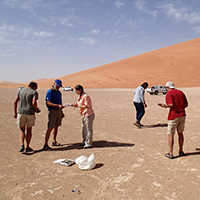
When a meteoroid travels in space, solar radiation leaves distinctive imprints on its outer layer. Together with colleagues, ETH researcher Antoine Roth has developed novel analytical techniques to detect these imprints, allowing the team to reconstruct meteorites’ space journeys.
Earth is bombarded at random
News
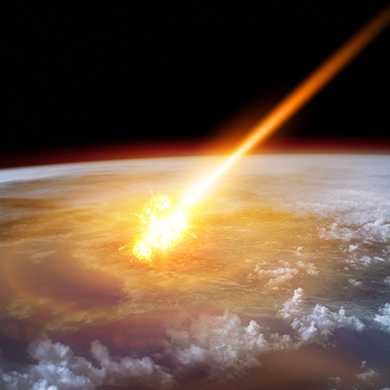
Asteroids don’t hit our planet at regular intervals, as was previously thought. Earth scientists from ETH Zurich and Lund University in Sweden have reached this conclusion after analysing impact craters formed in the last 500 million years, concentrating on precisely dated events.
How planets like Jupiter form
News
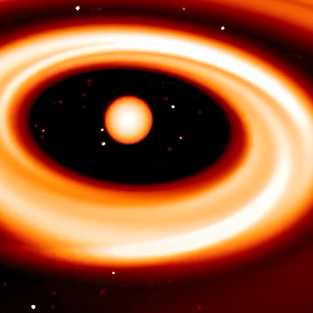
Young giant planets are born from gas and dust. Researchers of ETH Zürich and the Universities of Zürich and Bern simulated different scenarios relying on the computing power of the Swiss National Supercomputing Centre (CSCS) to find out how they exactly form and evolve.
Galaxies used to play by different rules
News
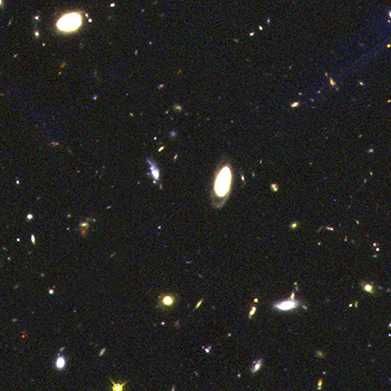
ETH researchers studying how stars are formed in distant galaxies have made an unexpected discovery: a correlation that exists today between the proportion of heavy chemical elements in a galaxy and the rate at which new stars are formed in this galaxy did not apply 10 billion years ago. This observation helps scientists understand how galaxies with their stars and planets were formed over billions of years.
A precocious black hole
News
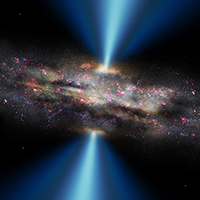
Black holes can be found at the centres of most galaxies. Most have little mass compared with their host galaxy. ETH researchers, however, have discovered a particularly massive black hole, which clearly grew so quickly that the host galaxy was not able to keep pace. This calls into question previous thinking on the co-evolution of galaxies and their central black holes.
Observing the birth of a planet
News
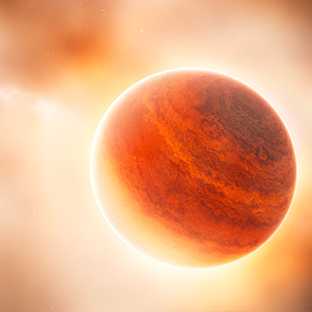
Astronomers at ETH Zurich have confirmed the existence of a young giant gas planet still embedded in the midst of the disk of gas and dust surrounding its parent star. For the first time, scientists are able to directly study the formation of a planet at a very early stage.
A new and game-changing magnetoresistance
News

More than 150 years ago, William Thomson, later Lord Kelvin, discovered the magnetoresistive effect. Today, this finding enables sensors to measure the rotational speed of a car wheel, and is also used in compass navigation and robot control systems. ETH material scientists have now found a new kind of magnetoresistance that promises further insight into basic research and could one day be used for practical applications.
“I see myself as a discoverer”
News

Professor Ursula Keller’s area of expertise is ultrashort laser pulses. Together with her group at ETH, she is currently developing new metrology techniques and novel semiconductor lasers that might well find application in every household. Ursula Keller will be in California on 13 May 2015 to receive the renowned OSA Charles H. Townes Award in recognition of her achievements.
An unlikely attraction
News

Like charges normally repel each other. That’s not the case at the interface between air and water. This is where ETH researchers observed an unusual phenomenon with nanoparticles, and found an explanation.
Catching qubits in a trap
News

Jonathan Home’s laboratory has a room full of equipment that traps tiny ions and places them in special quantum states – perhaps the first step towards building a quantum computer.
A quantum channel made of light
News
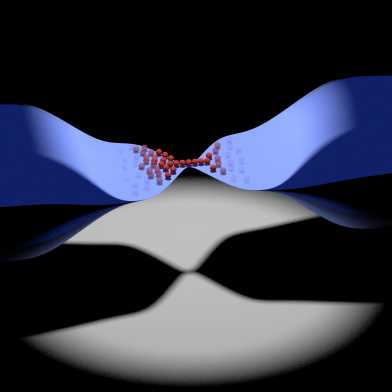
In experiments using ultracold atoms and laser light, ETH researchers have measured a stepwise change in conductivity as the atoms pass through tiny structures. This is the first time that this quantum effect has been observed for electrically neutral particles.
Exotic states of light and matter
News
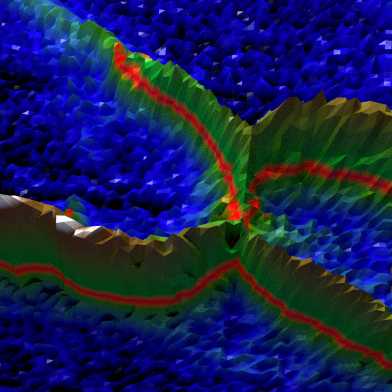
With a combination of solid-state physics and quantum optics, ETH researchers observe new multiparticle states that so far defied a complete theoretical description. The experiments might be the first step towards developing quantum computers based on photons.
Solar explosions inside a computer
News
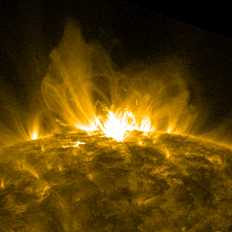
Strong solar flares can bring down communications and power grids on Earth. By demonstrating how these gigantic eruptions are caused, ETH physicists are laying the foundations for future predictions.
When a doughnut becomes an apple
News
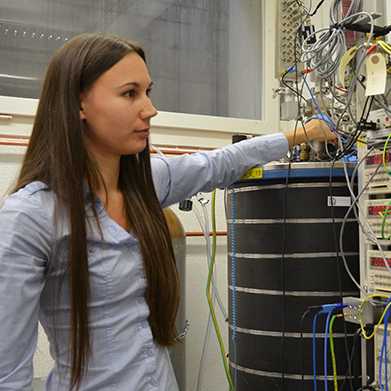
In experiments using the wonder material graphene, ETH researchers have been able to demonstrate a phenomenon predicted by a Russian physicist more than 50 years ago. They analysed a layer structure that experts believe may hold unimagined promise.
“The ball is in D-Wave’s court”
News
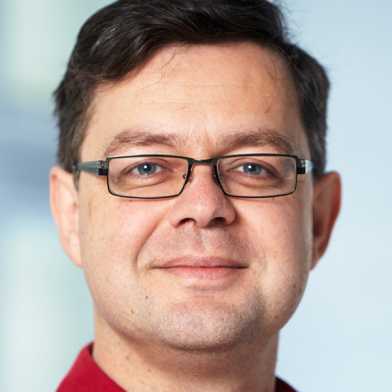
Google and American defence company Lockheed Martin paid more than USD 10 million for a quantum computer, although its exact capabilities are unknown. A team headed by ETH professor Matthias Troyer examined the question of how to properly test such devices, creating quite a stir in the process.
Protecting olive oil from counterfeiters
News

Who guarantees that expensive olive oil isn't counterfeit or adulterated? An invisible label, developed by ETH researchers, could perform this task. The tag consists of tiny magnetic DNA particles encapsulated in a silica casing and mixed with the oil.
The ATM strikes back
News

Hot foam may soon send criminals running if they damage ATM. ETH researchers have developed a special film that triggers an intense reaction when destroyed. The idea originates from a beetle that uses a gas explosion to fend off attackers.
Preventing natural gas crises
News
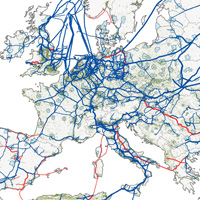
Europe can withstand a significant shortage in its natural gas supply provided it has a fair distribution strategy. ETH researchers have developed a model demonstrating how best to mitigate deficits in the pipeline network.